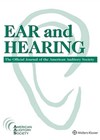
Journal Reviews
What are the risk factors for new onset tinnitus?
Factors associated with tinnitus have mainly been studied cross-sectionally. Tinnitus is associated with hearing loss, noise exposure, ototoxic medication, head and neck trauma, smoking and depression and anxiety. Only a few studies exist that report on risk factors for developing...
Small but significant
These authors try to circumnavigate the conundrum of what is influenced by what. For something so small, the impact of the Stria Vascularis cannot be understated. The difficulty in reviewing the influence of loop diuretics or aminoglycosides on the Stria...
A twitch in time with a flicker of knowledge
The middle ear muscles can be seen as one of the ear’s safety mechanisms, and the interplay between eyes and ears has been established; think vestibular ocular reflex (VOR) or semi-circular canal dehiscence (SCCD). But can this protective mechanism be...
Corticosteroid prescribing in ENT - are we at risk of being sued?
Of medications leading to malpractice claims, corticosteroids comprise the third most common. They are used widely and have a significant side-effect profile: hypertension, lipodystrophy, diabetes, avascular necrosis of the femoral head, peptic ulceration and psychiatric reactions to name but a...
Pharmacologic treatment options for tinnitus
This article summarises potential medications that could be used to treat tinnitus and the evidence behind their use. Effective medications to eliminate tinnitus remain elusive but treatment could be divided into two broad categories: treatment to reduce perception of tinnitus...
The role of cVEMPs in the diagnosis of Meniere’s disease
This study sets out to determine the most useful metrics to use from cervical-vestibular evoked myogenic potential (c-VEMP) tests when the diagnosis of Meniere’s disease (MD) is unclear, or as a follow-up tool. It is known that cVEMPs can detect...
Clinical features of BPPV in Meniere’s disease
It is an observation that BPPV appears to be commonly associated with Meniere’s disease (MD). This five-year study compared features and treatment outcomes between patients presenting with MD in conjunction with unilateral BPPV and a group of BPPV patients without...
The applicability and reliability of SHIMP, a new vestibular test, in adolescents
The video head impulse (now called the head impulse paradigm – HIMP) is now a routine test battery in neuro-otological practice. Few will be familiar with the new suppression head impulse paradigm (SHIMP) test. The key difference is that, in...
A trial of house dust mite sublingual tablet in children with allergic rhinitis
The house dust mite (HDM) is one of the commonest causative agents in allergic rhinitis (AR), affecting patients across all demographics. Recently, sublingual immunotherapy (SLIT) has been shown in clinical trials and meta-analysis to be effective compared to placebo in...
Tinnitus in children
This is a review article about the management of tinnitus in children. In the end the authors came up with just three papers that made the grade. Maybe the most interesting finding was from Vianni in the JLO in 1989....
DIY Epley manoeuvre
This is an interesting paper that looks at getting patients to do their own particle repositioning manoeuvre (PRM) after having it done by a clinician (‘Epley’ to you and me although there are some slight differences) once a week for...
Earplugs fit for purpose
The aim of occupational audiology is to prevent hearing loss caused by occupational sound exposure which can exacerbate the long-term effects of central presbyacusis as employees age. To provide the best noise protection over time, research suggests that best practice...















